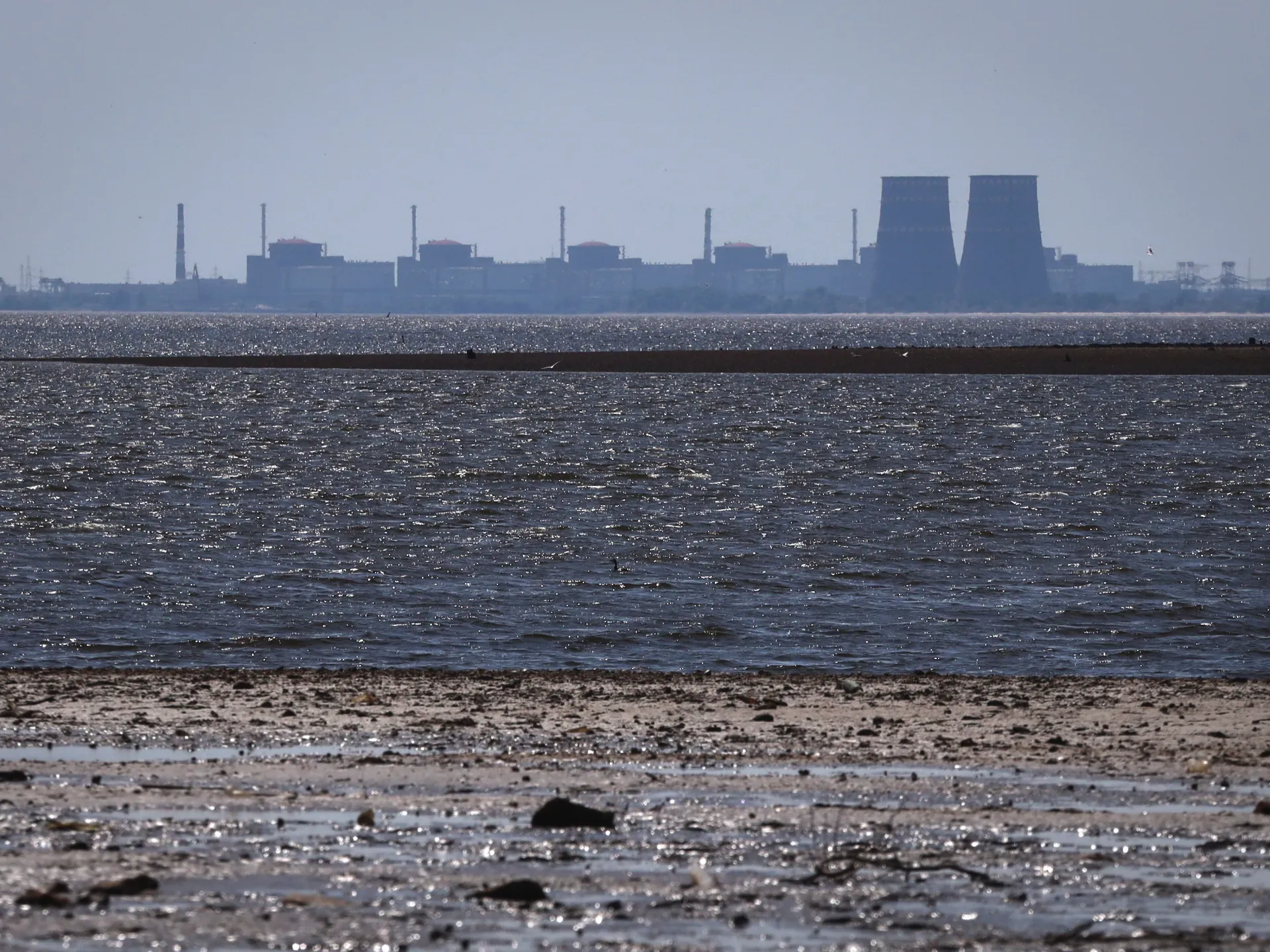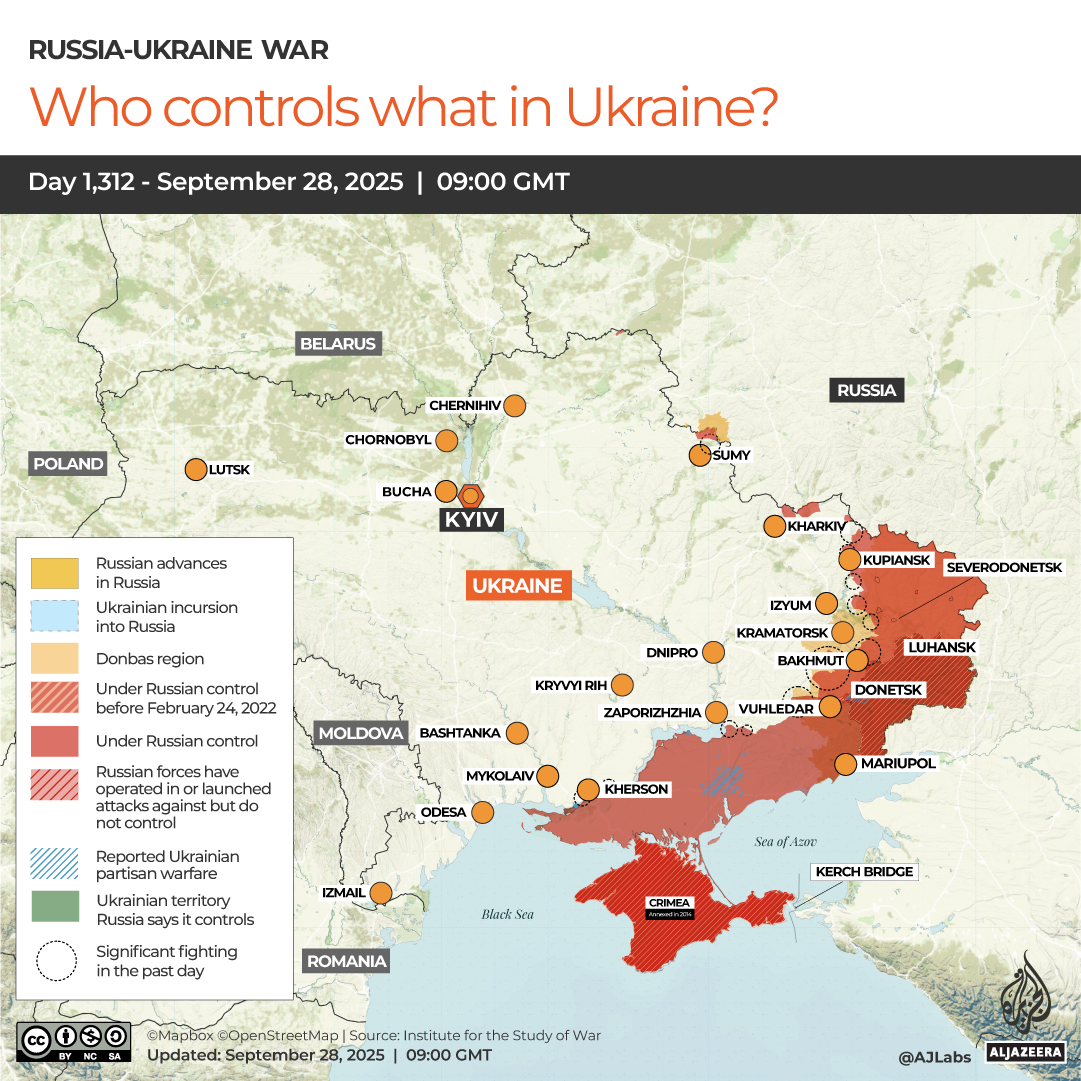Zaporizhzhia nuclear plant repairs begin in Ukraine as ceasefire zones set | Russia-Ukraine war News
The plant’s last external lines were severed in September in attacks that Russia and Ukraine blame on each other.
Published On 18 Oct 2025
Repair work has started on damaged off-site power lines to Ukraine’s Zaporizhzhia nuclear power plant following a four-week outage, the United Nations nuclear watchdog has confirmed.
The work began after local ceasefire zones between Ukrainian and Russian forces were established to allow the work to proceed, International Atomic Energy Agency (IAEA) Director General Rafael Grossi said in a post on social media platform X on Saturday.
Recommended Stories
list of 4 itemsend of list
“Restoration of off-site power is crucial for nuclear safety and security,” Grossi said.
“Both sides engaged constructively with the IAEA to enable complex repair plan to proceed.”
The Russian-appointed management of the occupied plant, in one of the war’s most volatile nerve points in southeastern Ukraine, confirmed the maintenance work, saying it was made possible by “close cooperation” between the IAEA and Russia’s state nuclear corporation Rosatom.
The Russian Defence Ministry will play a key role in ensuring the safety of the repair work, the plant said on Saturday via its Telegram channel.
The plant is in an area that has been under Russian control since early in Moscow’s full-scale invasion of Ukraine in February 2022 and is not in service, but it needs reliable power to cool its six shutdown reactors and spent fuel to avoid any catastrophic nuclear incidents.
It has been operating on diesel generators since September 23, when its last remaining external power line was severed in attacks that each side blamed on the other. The IAEA has repeatedly expressed alarm about the nuclear plant, which is the biggest in Europe.
The Associated Press news agency reported earlier this week that the IAEA is proposing to restore external power to the plant in two phases, quoting a European diplomat briefed on the proposal by Grossi. A Russian diplomat confirmed some aspects of the plan.
Both diplomats spoke to the AP on condition of anonymity because they were not authorised to discuss the confidential negotiations publicly.
During the first phase, a 1.5km-radius (1-mile-radius) ceasefire zone would be established to allow repair of the Dniprovska 750-kilovolt line, the main power line to the plant that has been damaged in an area under Russian control.
During the second phase, a second such ceasefire zone would be established to repair the Ferosplavna-1 330-kilovolt backup line, which is in area under Ukraine’s control.
Grossi held talks with both Kyiv and Moscow last month. He met with Ukrainian Foreign Minister Andrii Sybiha on September 29 at the Warsaw Security Forum, following meetings in the Russian capital with President Vladimir Putin on September 25 and Rosatom Director General Alexei Likhachev on September 26.
The IAEA warned that if diesel generators fail, “it could lead to a complete blackout and possibly causing an accident with the fuel melting and a potential radiation release into the environment, if power could not be restored in time”.
Ukraine’s foreign minister accused Russia on Sunday of deliberately severing the external power line to the station, to link it to Moscow’s power grid.
A top Russian diplomat this month denied that Russia had any intention of restarting the plant.


